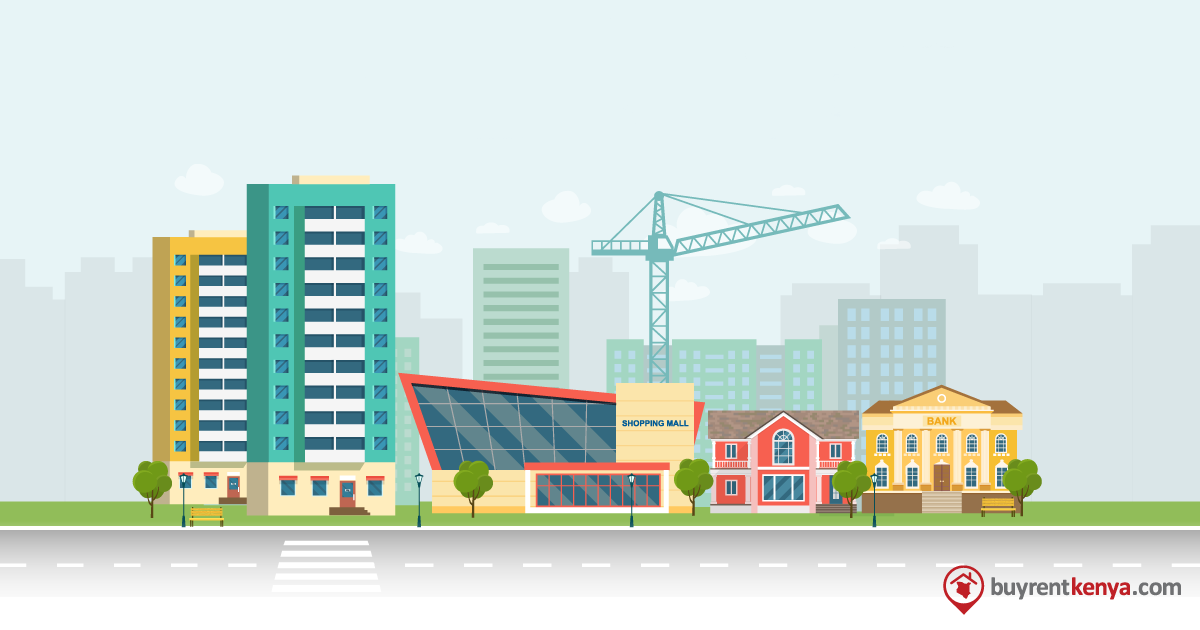On the 20th of May 2021, BuyRentKenya in collaboration with Building in Kenya held their first webinar of a three-part series to discuss mixed-use developments and if they are the future of real estate.
The webinar speakers were Esther Karegi, Agency Manager from Laser Properties, Jayesh Chavda, Director of TRV Group of Companies, Wilson Mugambi, President of the Architectural Association of Kenya and the moderator Robyn Emerson, President of the Women in Real Estate(WIRE) and Author of Building in Kenya.
Table of Contents
What is a Mixed-use Development?

It refers to a development that integrates residential and commercial use in the same space.
Investors are maximizing how they use their piece of land by creating spaces where people can live, play, work, get entertainment and meet their lifestyle needs under one neighbourhood.
Some of the mixed-use developments in Nairobi include Two Rivers, Garden City, Ciata, Tatu City all of which offer different facilities such as medical centres, retail shops, eateries, banks and many more.
Are They the Future of Real Estate?
It is not only about the returns but also how sustainable they are. There are many benefits of mixed-use developments.
- They’re more profitable and provide various streams of income
- The variety of tenants can lessen the amount of risk to the investor
- People having easy access to services leads to property demand
- Gives the developer more flexibility to adapt to people’s changes
- Provide spaces where people can live, work, play in one location
- Better to manage which leads to higher quality tenants and fewer vacancy cycles
- Builds a community if the development is in a shared space
Conversely, mixed-use developments have their drawbacks.
- They require longer planning periods and permits
- Some locations are not suited for a mixed-use development
- Getting financing might take time especially if you are setting up in a new location
- They don’t provide privacy to the residents
- There’s a lot of noise and congestion from all the activities
Another challenge that came out in the webinar is the infrastructure and servicing. It is not only a division of land but also a planning and zoning endeavour.
One participant brought out a valid point about most developments not being able to cater to the elderly or the sick because they don’t provide lifts or wheelchair ramps.
Vertical Vs. Horizontal Mixed-Use Developments

Because of the lack of space in Nairobi, developers are being challenged to find ways in which they can build mixed-use developments vertically as opposed to horizontally.
Vertical developments provide different users in one building. For instance, the floor below can consist of shops, restaurants and other commercial businesses while the upper floors can be used as residential spaces.
On the other hand, horizontal development means having single-use buildings in one mixed-use parcel. This way, there can be residential units and businesses in the same location within a walking distance.
How to Invest in a Mixed-Use Development
You can construct a mixed-use development by finding the right location and financing for your project. Take some time to learn about the area and the demographics. Study the market and understand the end-user. Larger projects tend to be less flexible.
Flexibility and affordability are key when investing in mixed developments. Developers should take note of the costing of all processes and ensuring effective budget and cost management.
Mixed-use developments are only efficient if the services paired have an adequate supply and demand relationship. An oversupply of offices, houses or shops in one area is not effective development.
Mixed-Developments are the Way to Go
A building or space that provides multiple uses adapts to the ever-growing needs of its tenants which will provide convenience and improve their quality of life. Happy tenants mean more return on investments for investors – a win-win situation.
Watch the FULL webinar and stay tuned for our next session of the #WinningInAPandemic series.



